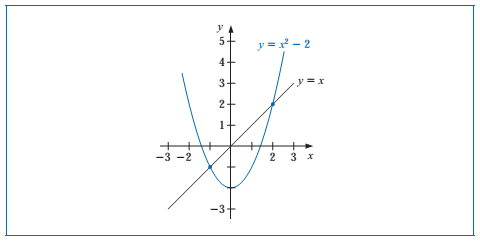Fixed-Point Iteration Method
Fixed-Point
The number p is a fixed point for
a given function g if
g( p) =
p.
A fixed point for a function is a number at which the value of the function does not change when the function is applied.
Example 1: Determine any fixed
points of the function g(x) = x2-2
Solution: A fixed point p for g has the property that
p = g( p) =p2−
2
which implies that
0 = p2 − p − 2 = ( p + 1)( p − 2).
A fixed point for g occurs precisely when the graph of y = g(x)
intersects the graph of y = x, so g has two fixed
points, one at p = −1 and the other at p = 2. These are shown in
the following figure.
Theorem:
Example 2: Show that g(x)
= (x2 − 1)/3 has a unique fixed point on the
interval [−1, 1].
Fixed-Point
Iteration
Let g ∈ C[a, b] be such that g(x) ∈ [a, b], for all x in [a, b]. Suppose, in addition, that g exists on (a, b) and that a constant 0 < k < 1 exists
Then for any number p0 in [a,
b], the sequence defined by
pn
= g( pn-1), n ≥ 1,
converges to the unique fixed point p in [a, b]. This technique is called fixed-point,
or functional iteration. The procedure is illustrated in the
following figure.






Comments
Post a Comment